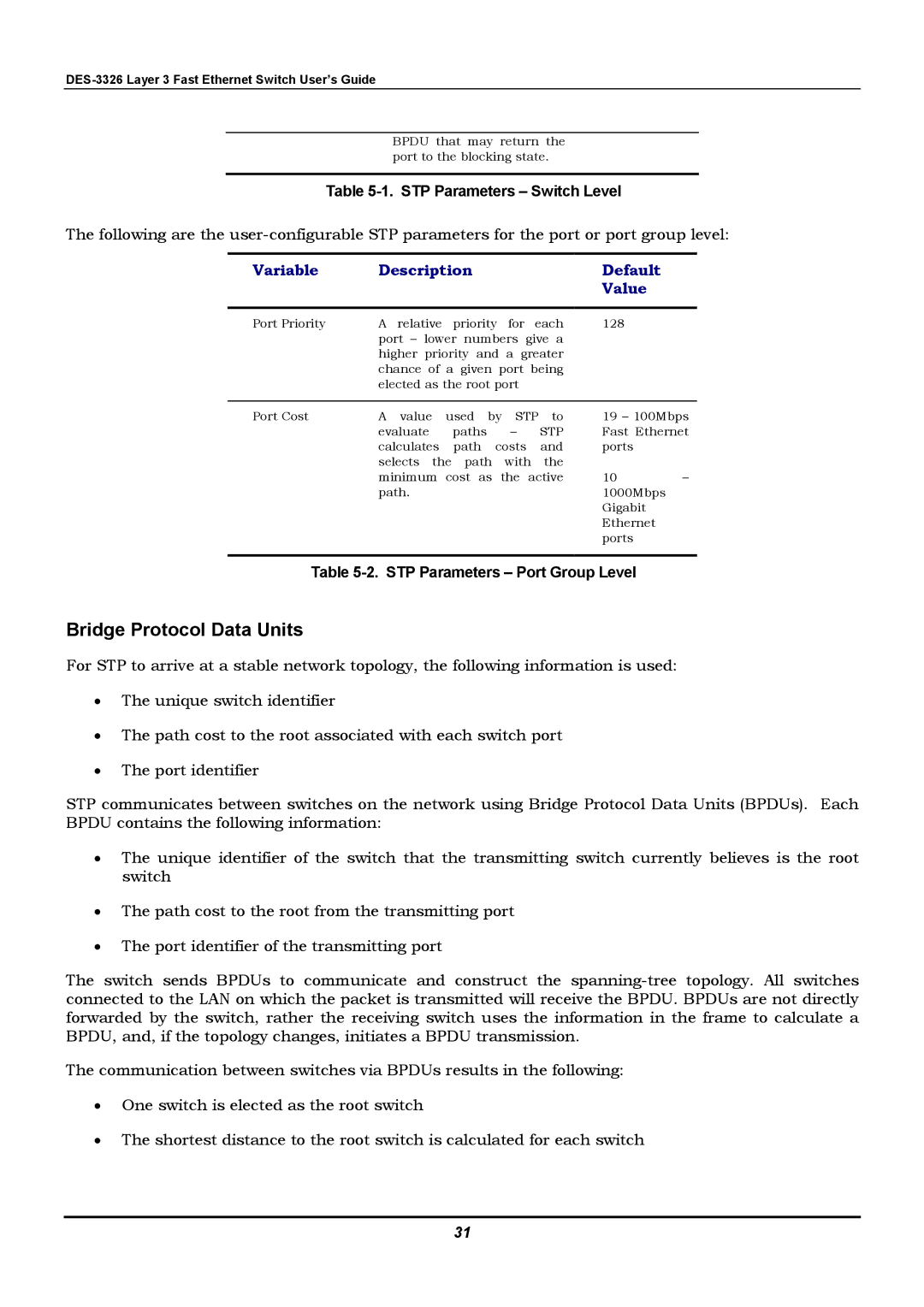
BPDU that may return the port to the blocking state.
Table
The following are the
Variable | Description |
|
|
| Default |
| ||
|
|
|
|
|
|
| Value |
|
|
|
|
|
|
|
|
| |
Port Priority | A | relative | priority | for | each | 128 |
| |
| port – lower numbers give a |
|
| |||||
| higher priority and a greater |
|
| |||||
| chance of a given port being |
|
| |||||
| elected as the root port |
|
|
| ||||
|
|
|
|
|
|
| ||
Port Cost | A | value | used | by | STP to | 19 – 100Mbps | ||
| evaluate | paths |
| – | STP | Fast Ethernet | ||
| calculates | path | costs | and | ports |
| ||
| selects the path with the |
|
| |||||
| minimum cost as the active | 10 | – | |||||
| path. |
|
|
|
| 1000Mbps |
| |
|
|
|
|
|
|
| Gigabit |
|
|
|
|
|
|
|
| Ethernet |
|
|
|
|
|
|
|
| ports |
|
Table
Bridge Protocol Data Units
For STP to arrive at a stable network topology, the following information is used:
•The unique switch identifier
•The path cost to the root associated with each switch port
•The port identifier
STP communicates between switches on the network using Bridge Protocol Data Units (BPDUs). Each BPDU contains the following information:
•The unique identifier of the switch that the transmitting switch currently believes is the root switch
•The path cost to the root from the transmitting port
•The port identifier of the transmitting port
The switch sends BPDUs to communicate and construct the
The communication between switches via BPDUs results in the following:
•One switch is elected as the root switch
•The shortest distance to the root switch is calculated for each switch
31
